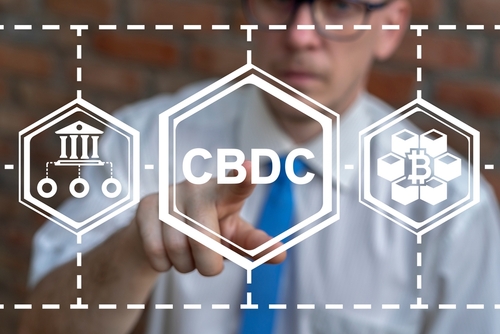A discussion paper that looks at the pros and cons of a potential U.S. central bank digital currency was released by the Federal Reserve Board on Thursday.

The paper examines the current state of the domestic payments system and the different types of digital payment methods and assets that have emerged in recent years, including stablecoins and other cryptocurrencies. It also looks at the potential benefits and risks of a central bank digital currency (CBDC) and outlines specific policy considerations.
The paper notes that a CBDC could potentially offer a range of benefits. “For example, it could provide households and businesses a convenient, electronic form of central bank money, with the safety and liquidity that would entail; give entrepreneurs a platform on which to create new financial products and services; support faster and cheaper payments (including cross-border payments); and expand consumer access to the financial system,” the paper said.
The paper represents the first step in determining whether a CBDC could improve the domestic payments system. The Fed notes that the paper does not favor any policy outcome. The Fed invites public comment on the contents of the discussion paper, asking for feedback on more than 20 questions. Comments will be accepted for 120 days and can be submitted through a feedback form.
“We look forward to engaging with the public, elected representatives, and a broad range of stakeholders as we examine the positives and negatives of a central bank digital currency in the United States,” Federal Reserve Chairman Jerome Powell said.
While consumers and businesses have long held and transferred digital currency through bank accounts, online transactions, or payment apps, a CBDC would be a liability of a central bank, like the Federal Reserve, not a commercial bank.
Sen. Sherrod Brown (D-OH), chairman of the U.S. Senate Banking Committee, called it a good first step.
“The Federal Reserve’s report is a good first step toward designing a central bank digital currency that will bring more Americans into our banking system and help maintain the United States’ leadership in the global economy,” Brown said. “I look forward to working with the Federal Reserve and the Biden Administration to ensure that workers, small business, community banks, and credit unions can continue to participate in our digital economy,” Brown said.
The paper includes the potential downsides of a CBDC, and raises policy questions such as how to ensure a CBDC would preserve monetary and financial stability as well as complement existing means of payment. Another key policy consideration is how to preserve the privacy of citizens and maintain the ability to combat illicit finance.
“While the report mentions the importance of CBDC privacy, I’m concerned the Fed does not clearly explain how it would protect consumer transaction data. There’s also a question in my mind whether the Fed’s report implies that a CBDC would not allow for direct peer-to-peer transactions. This characteristic is fundamental,” said Sen. Pat Toomey (R-PA), ranking member on the Senate Banking Committee. “Today’s report is an important step by the Fed in acknowledging the permanence of cryptocurrencies and their underlying technologies. I look forward to working with the Fed and my colleagues in Congress to consider the authorization of a properly designed CBDC.”
Rep. Patrick McHenry (R-NC), ranking member on the House Financial Services Committee, said it’s more important to be right than first on this.
“This means policymakers must closely examine the impact a CBDC will have on private sector competition and innovation, while addressing privacy, civil liberties, and security concerns. I am pleased the report reaffirms the Fed will not move forward on a CBDC without express authority from Congress. I look forward to working with my colleagues to ensure our financial system, including the role of the Fed, continues to support our economic and global competitiveness,” McHenry said.